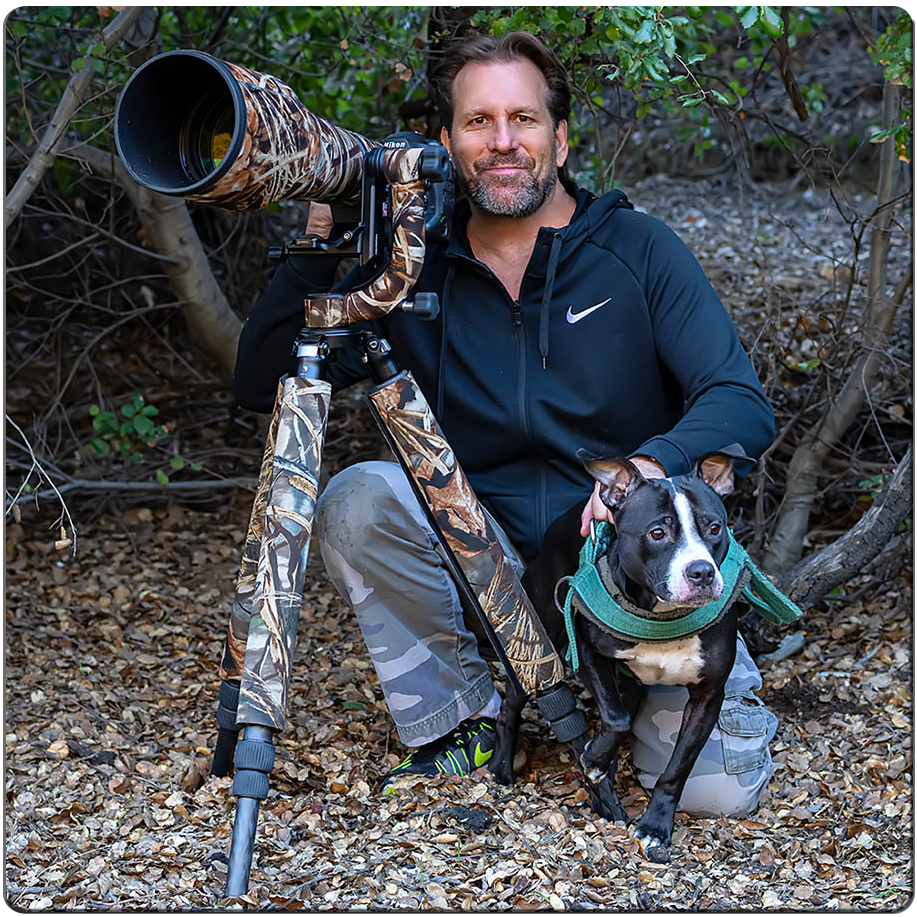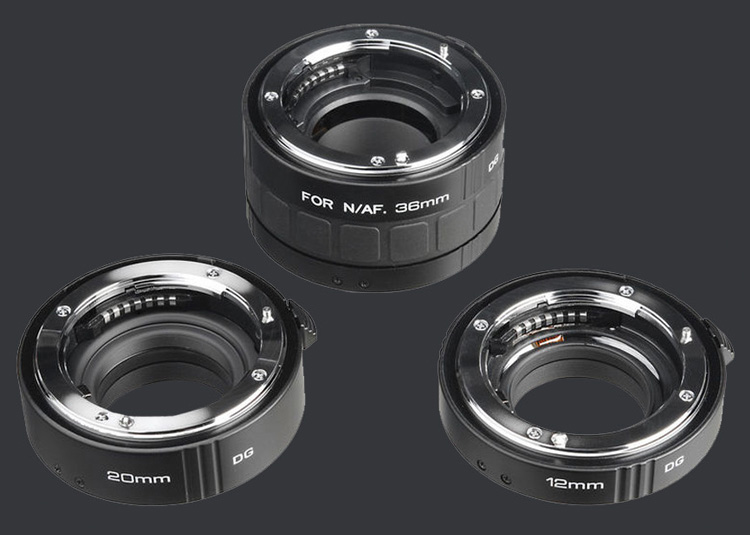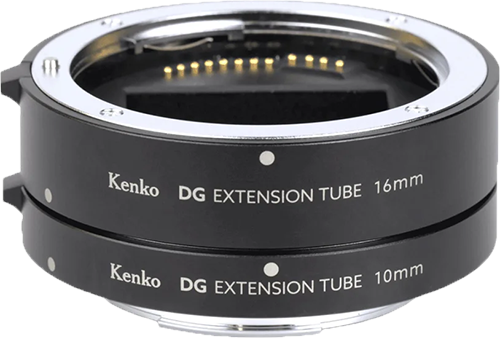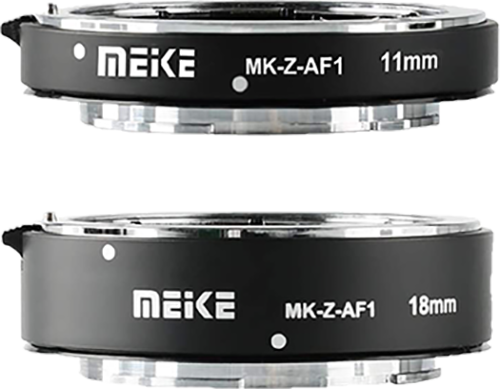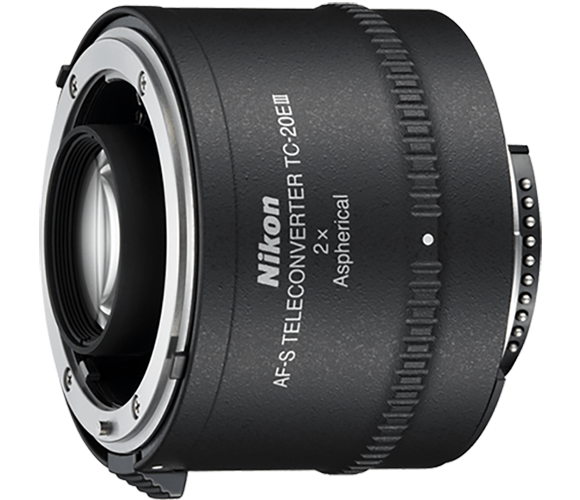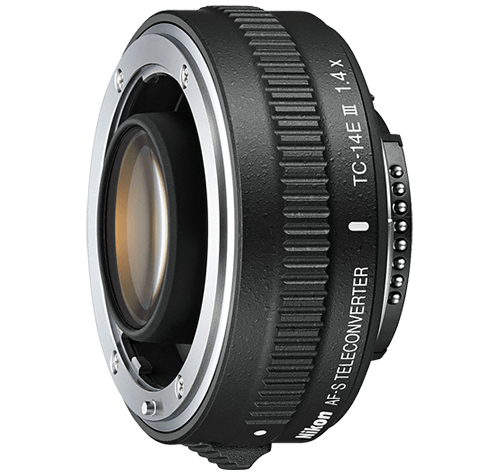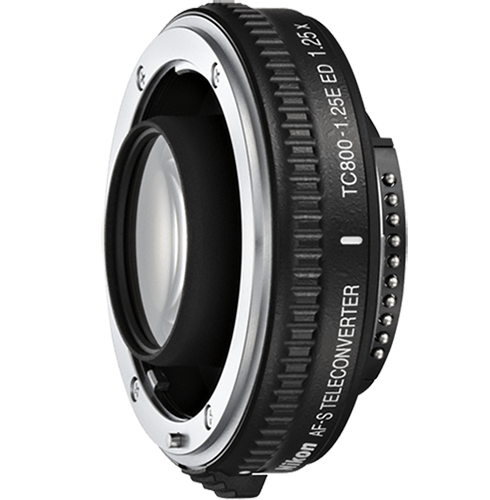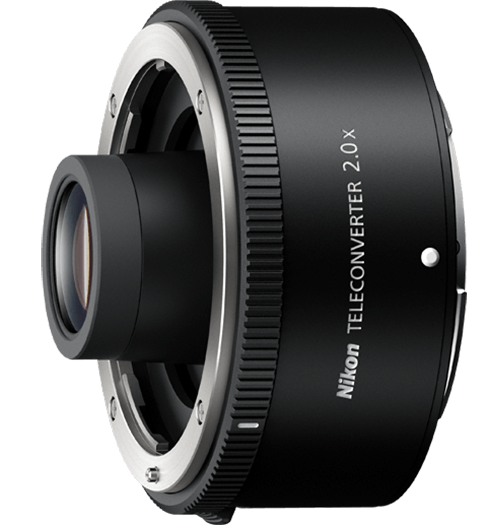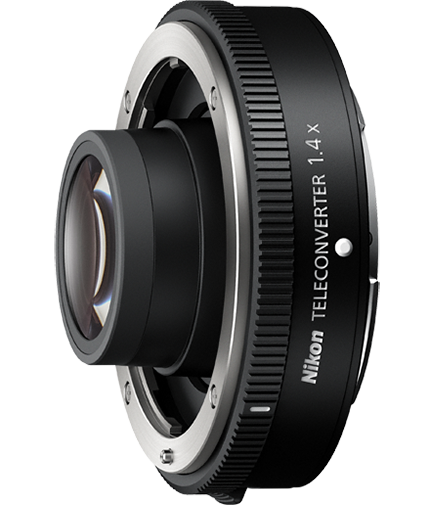Extension Tubes
Extension tubes are merely strategically-inserted rings that a photographer places between his camera and lens, in the effort to amplify both “minimum focusing distance” (MFD) as well as “reproduction ratio” (RR). They are fairly inexpensive tools which greatly enhance the usefulness of lenses not specifically optimized for macro photography. For my usage, I have many premium portrait lenses, which actually outperform dedicated macro lenses, but because of their limitations of proximity, as well as RR, they cannot be used for macro by themselves. However, by inserting extension tubes between these lenses and my camera, I immediately afford myself an opportunity to “take macro shots” at a faster aperture than any macro lens can achieve.
F-Mount Extension Tubes
F-Mount Extension Tubes consist of 3 rings, rather than 2 rings (as with the Z-Mount), primarily because the F-Mount has so much further distance between the sensor and the lens.
Kenko DG Extension Tube Set for Nikon F-Mount
These are basic extension tubes, coming in a set of 3 rings (12mm, 20, and 36mm), each of which can be used singly, or in any possible combination, to decrease MFD, while at the same time increasing RR. To see how each ring, or each combination, affects your particular F-Mount lens click on Cambridge In Color. I use these tubes with my 28/1.4E, 58/1.4G, and 105/1.4E portrait lenses to create unique looks.
See @ Kenko: Kenko DG Extension Tube Set for Nikon F-Mount
Z-Mount Extension Tubes
Z-Mount Extension Tubes consist of only 2 rings, rather than 3 rings (as with the F-Mount), primarily because the Z-Mount has so much less distance between the sensor and the lens.
Kenko Auto Extension Tube Set for Nikon Z Mount
These are basic extension tubes, just a set of 2 rings (10mm and 16mm), each of which can be used singly, or in combination, to decrease MFD, while at the same time increasing RR. To see how each affects your particular Z-Mount lens click on Cambridge In Color. I use these tubes with my Z 14-24 S and my Z 24-70 S lenses, in order to get much closer than I otherwise could to create near-macro ability.
See @ Kenko: Kenko Auto Extension Tube Set for Nikon Z Mount
Meike MK-Z-AF1 11mm and 18mm Extension Tubes
I also tried the Meike Extension Tubes, which are much less-expensive (@ $40) than the much pricier Kenko Tubes (@ $220), but unfortunately they are far less-sturdy. Still, the Meike’s remain a great value, and their slightly-bigger ring-size [11- and 18mm (rather than 10- and 16mm)], also allows slightly-closer MFD, as well as a slightly-greater RR, than do the Kenko tubes. To see how each affects your particular Z-Mount lens click on Cambridge In Color. However, because of how light they are, I wouldn’t use them with larger/heavier glass. As such, I gave these to my ex-girlfriend, for her much smaller & lighter Z DX 16-50mm and Z DX 50-250mm VR lenses.
See @ Meike: Meike MK-Z-AF1 11mm and 18mm Extension Tubes for Nikon Z
Teleconverters
Teleconverters are, essentially, the polar-opposite of Extension Tubes. Where Extension Tubes are hollow tubes that allow you to get closer to your subject (in order to magnify framing), Teleconverters are filled with magnifying glass, with the idea to allow you to be farther back from your subject (in order to keep the same framing). Probably the most common usage for TCs is bird photography. When enjoying bird photography, especially with smaller birds, “reach” is everything. For example, with my Nikkor 400/2.8 FL ED lens, I can almost never “fill the frame” when shooting small birds from a distance. However, when I add a 2x TC, I am now shooting at 800mm, so my chances filling the frame are much greater. However, sometimes even 800mm isn’t enough. I actually have a Nikkor 800/5.6 FL ED native lens, and I routinely use a 2x TC with even this, to where I am now shooting at 1600/11 🙂
F-Mount Teleconverters
I have three of the “TCE III” TCs that the Nikon F-Mount offered, which represents the pinnacle of Nikkor’s technology for DSLRs. The most important advent of Mirrorless is the fact the 2x TC (for DSLRs) was incompatible with the Nikkor 800/5.6 FL ED ~ whereas when shooting with the same lens, on a Z Mirrorless camera, the 2x TC still has autofocus. Below represents the Teleconverters that I deployed today:
Nikon AF-S Teleconverter TC-20E III
The Nikon 2x TCE III is essentially a “doubler” ~ it doubles the focal length of any compatible Nikkor lens. However, this “doubling effect” always comes at a loss of resolution, color& contrast, as well as bokeh. Therefore, this accessory is only good when deployed on the absolute finest of Nikkor lenses, which I am fortunate enough to own (the 800/5.6 FL ED, and the 400/2.8 FL ED). Before mirrorless, this 2x TC could not be used on Nikon’s greatest lens, the 800 FL ED, because DSLRs could not retain AF, when a TC made “a native lens” f/11. The Nikon Z-Mount changed everything. With the Z9 (or any of the Z-Mount cameras), I can now have AF while shooting at 1600 f/11, on my 800/5.6, which again is not possible when shooting with a DSLR.
See @ Nikon: Nikon AF-S Teleconverter TC-20E III
Nikon AF-S Teleconverter TC-14E III (x2)
The Nikon 1.4x TCE III is the perfect balance between “extra reach” and not loosing too much of your native lens’ capabilities. Not only is it friendlier with budget lenses (not to mention compatible), but it also retains incredible quality with paired Nikon’s finest. This is why I have two of these amazing teleconverters, one glued to my 400 FL ED, the other glued to my 800 FL ED. (Only occasionally do I revert to the other two TCs.)
See @ Nikon: Nikon AF-S Teleconverter TC-1.4E III
Nikon AF-S TELECONVERTER TC800-1.25E ED
The Nikon 1.25x TC is designed only as a companion for the Nikkor 800/5.6 FL ED lens, in order to turn it into a 1000mm f/7 optic. (It is incompatible w/ any other Nikkor super-telephoto lens.) When this TC was first created, it was before mirrorless cameras existed, and (as such), the 1.4x TCs were “sketchy” on the 800, and the 2x TCs simply didn’t work. Nowadays, with the advent of Nikon Mirrorless Cameras, this TC has “gone by the wayside” a little bit, and yet it is still optically-excellent, not to mention “tuned-in” to my 800 FL ED lens. That said, I still prefer to use (my second) 1.4x TC with my 800 … really, with both of my Nikkor super-telephototos.
See @ Nikon: Nikon AF-S Teleconverter TC800-1.25E ED
Z-Mount Teleconverters
The Z-Mount only has two Teleconverters at this time, not surprisingly the 2.0 (2x) and the 1.4 (for 40% better reach). I have both and use both. I will describe my use case for each below:
Nikon Z Teleconverter TC-2.0x
I used to have this 2x TC glued to the end of my Z 70-200 f/2.8 S Zoom, but ever since I bought the Z 100-400 f/4.5-5.6 S, this 2x TC hasn’t seen much use. While it paired excellently with the 70-200, the image quality degradation on the 100-400 is pretty bad. Meanwhile, the bare 100-400 @ 400 is better than the 70-200 w/ this 2xTC on it, so both are better used without it. If I ever upgrade the Nikon’s 400/2.8 or 600/4, this might see more use, but the quality of the 100-400 (@ 400 w/ the 2xTC for 800) is not very good. Just being honest. Nikon’s best super telephotos are so good they can still look fantastic with a 2xTC (and so can their best zooms), but not their mid-grade zooms.
See @ Nikon: Nikon Z Teleconverter TC-2.0x
Nikon Z Teleconverter TC-1.4x
This TC is pretty much glued to my 100-400, turning it into a 140-560mm zoom, with .53x magnification, without losing too much image quality. Indeed, this little extender makes my 100-400 the most useful all around lens I possess at this time. Not the most incredible; just the most useful. I may opt to secure another one of these, as it really works well on the 70-200 also. However, I try to keep this latter zoom bare, as the image quality and bokeh are so sensational. Yet they remain pretty close to sensational with this little TC on it as well.
See @ Nikon: Nikon Z Teleconverter TC-1.4x
